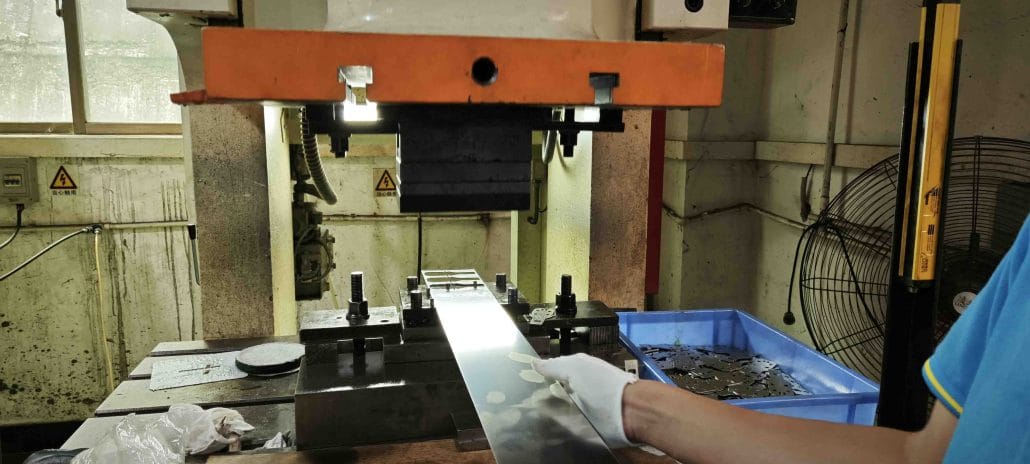Metal stamping is a widely used manufacturing process that involves manufacturing metal parts from flat metal sheets. This process is used to produce various metal components in industries such as automobiles, aerospace, and electronics. In this article, we will explore in detail the metal stamping process and answer ‘How does metal stamping work?’
The Basics of Metal Stamping
Metal stamping involves the use of a die and a punch to cut and form metal into specific shapes and sizes. The die is typically made of hardened steel and is used to cut or shape the metal, while the punch is used to force the metal into the die. The metal is fed into the machine, and the punch applies pressure to the metal, which causes it to deform and take on the shape of the die.

The metal stamping process can be broken down into several key steps:
Step 1: Design and Tooling
The first step in metal stamping is the design process. The design of the part will determine the shape and size of the mold and punch required to create the part. Once the design is completed, the processing process begins. The molds and punches are manufactured using CNC machine tools, which are programmed to cut and shape steel to the required specifications.
Step 2: Material Selection
The next step in the metal stamping process is material selection. The type of metal used will depend on the application and the requirements of the part. Common metals used in metal stamping include aluminum, copper, brass, and stainless steel.
Step 3: Material Preparation
Once the material is selected, it is prepared for stamping. This involves cleaning and lubricating the metal to ensure that it can be fed into the machine and stamped without issue. The lubrication also helps to protect the metal and the tooling from wear and tear.
Step 4: Stamping
After preparing the tools and materials, the stamping process can begin. The metal is fed into the stamping machine, and the punch exerts pressure on the metal, forcing it into the mold. Repeat the process until the desired shape and size are achieved.
Step 5: Finishing
After the metal is stamped, it may require finishing to remove any rough edges or burrs. This can be done using various methods, including grinding, sanding, or polishing. The finishing process helps to ensure that the final product meets the required specifications and is free of any imperfections.

Advantages of Metal Stamping
There are several advantages to using metal stamping as a manufacturing process. These include:
- Cost-effective: Metal stamping is a cost-effective method for producing large quantities of metal parts.
- High accuracy: The use of CNC machines ensures that the parts produced are highly accurate and consistent.
- Versatility: Metal stamping can be used to produce a wide range of parts, from small electronic components to large automotive parts.
- Speed: Metal stamping is a fast process and can produce parts quickly and efficiently.
Conclusion
Metal stamping is an efficient manufacturing process used to produce various metal parts. By understanding the basic knowledge of metal stamping technology, you can better understand its many advantages and applications. If you are looking for an economical, efficient, accurate, and universal method of producing metal parts, metal stamping may be the solution you need.


